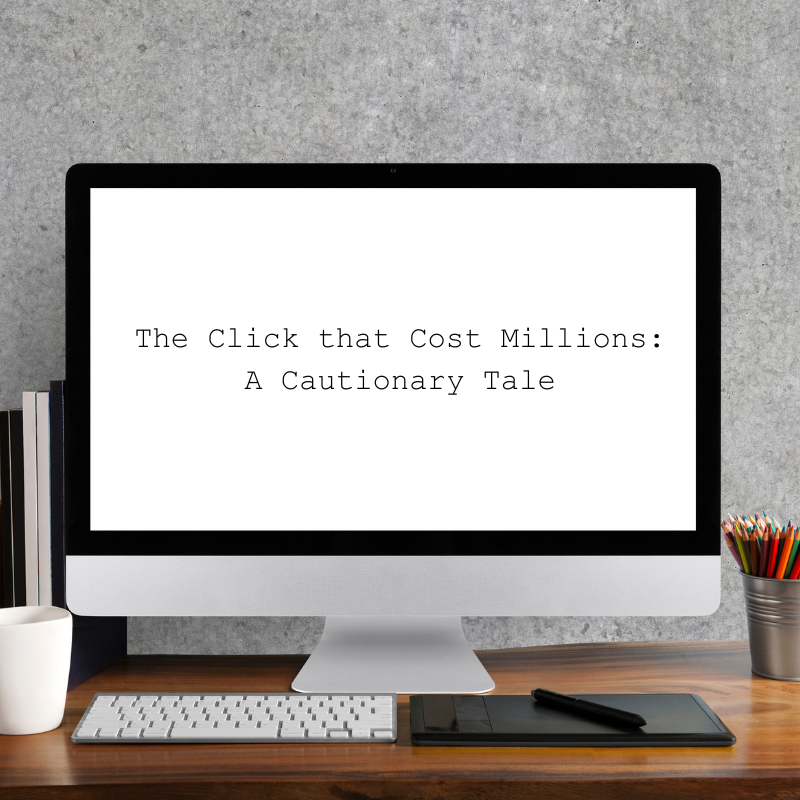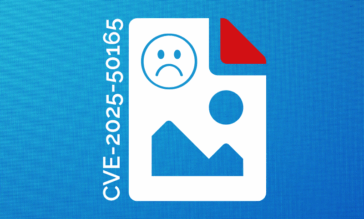The Click that Cost Millions: A Cautionary Tale from HR’s Front Lines

Story by MJ Kaufmann, Cybersecurity Author & Instructor
It was just another day in the HR department. Sarah, an HR specialist, settled in with her morning coffee, ready to sift through the stack of resumes that had accumulated overnight. The task was routine but crucial—filtering through potential candidates and selecting the best interview fits. Today, like every other day, she logged into the job application portal, where hopeful applicants submitted their resumes for consideration.
After reviewing several promising candidates based on the forms they filled out, Sarah downloaded a resume that stood out, perfectly aligning with the company’s needs. With practiced clicks, she uploaded the document into the company’s shared cloud file storage—a central repository accessible to her team and the hiring managers. This repository was not just a convenience but a critical part of their hiring process, allowing seamless collaboration and efficient management of candidate information.
Unbeknownst to Sarah, this simple act of downloading and uploading resumes, a cornerstone of her daily routine, was about to trigger a sequence of events that would put the entire company’s cybersecurity (and reputation) at risk. What appeared to be a mundane task was, in fact, a gateway to potential threats lurking in the digital shadows, waiting for just such an opportunity to strike.
The Click Heard Round IT
Later that afternoon, Sarah returned to review the resume she had earmarked earlier. As she double-clicked the file to open it, she didn’t know that this simple act was about to unleash havoc across her company’s entire IT infrastructure.
The resume file, which appeared perfectly normal, contained a hidden threat—a cleverly disguised permutation of a known virus modified just enough to evade detection by the company’s antivirus software. The malware activated when Sarah opened the file, initiating a disastrous chain reaction. Instantly, it began spreading silently across all accessible files, particularly targeting those stored in the shared cloud repository that Sarah and her colleagues frequently used.
The malware, designed to be aggressive and stealthy, quickly encrypted data on Sarah’s hard drive, installing ransomware without any immediate signs that would alarm her or her IT department. As the ransomware took root, it started locking down files on her machine with encryption, making them inaccessible and eventually demanding a ransom for release.
Compounding the crisis, other HR team members, oblivious to the growing threat, continued accessing and opening files from the compromised cloud storage. Each click spread the infection further, multiplying the damage exponentially. Before long, the malware had propagated across numerous systems, with each user unknowingly contributing to a wider network compromise. This situation rapidly escalated into a full-blown emergency, yet the IT department remained in the dark.
Exfiltration Before Annihilation
Throughout the afternoon, the malware was already executing its primary mission—data exfiltration. Unseen and unchecked, it began to systematically access and transfer vast amounts of sensitive data from the infected systems. The malware was spreading chaos through encryption and ransomware and quietly siphoning data to a covert server, intricately hosted on a major cloud service, making the transfer appear as routine traffic that would not immediately raise alarms with network administrators.
This cunning strategy ensured the theft remained undetected, blending seamlessly with legitimate network activities. The malware scoured every accessible folder and document within the shared cloud storage, which included personal information, confidential company data, financial records, and more. As each piece of data was accessed, it was copied and pushed silently to the external site, where cybercriminals awaited their plunder.
By the time IT finally noticed unusual network activity, the damage was extensive—the entire contents of the shared storage had been effectively pilfered. The organization was facing the immediate threat of ransomware locking down systems and the realization that sensitive information had been stolen by an unknown attacker, potentially leading to further security breaches, privacy violations, and compliance failures. This dual threat marked a severe escalation in the incident, shifting it from a disruptive cyberattack to a catastrophic security breach with long-term repercussions.
Moral of the Story: Avoid Becoming a Statistic
While Sarah and her company are entirely fictional, this story has happened time and time again. The sad truth is no organization is immune to cybercriminals’ sophisticated strategies, and situations like this occur more often than we’d like. The good news is that this alarming tale does not have to be your company’s future. With the right tools and strategies, you can escape starring in the victim’s role and instead step into the limelight as an empowered defender. Let’s face it: no one wants to make headlines by becoming another statistic.
How to Eliminate the Threats
Advanced Data Detection and Response (DDR) offers a comprehensive approach to safeguarding sensitive data. DDR leverages different masking techniques to prevent (personally identifiable information) PII and other sensitive data from being exposed.
Central to effective DDR is implementing Zero Trust Content Disarm and Reconstruction (CDR) and Antivirus (AV) software, which forms a robust defense against malware infections and the resulting threats of private information exposure. Adhering to a Zero Trust model treats every file as a potential threat, ensuring meticulous scrutiny and sanitation.
CDR technology takes a proactive approach by dismantling each file and scrutinizing its components. It then reassembles the file using only those components that are verified as safe, ensuring that any hidden malware falls away in the process. The most advanced CDR preserves the file’s core functionality and fidelity, including fonts, layout, style, and even macros. The result is a document that maintains its original appearance and functionality but is free of malicious content.
To streamline this process, advanced CDR systems function as an API that integrates seamlessly between users and their interactions with file stores, emails, and other data transfer points. This setup allows for the automatic sanitization of all data passing through the system, adhering to a zero-trust security model where every file is treated as a potential threat and sanitized accordingly.
Antivirus software complements the CDR by scanning files as they pass through the system in real-time. AV is highly effective at rapidly identifying and neutralizing known threats based on existing signatures, acting as a first line of defense before files even reach the CDR. This dual-layered approach not only increases the overall security but also enhances the efficiency of the process, with AV clearing known threats and CDR focusing on deeper, more sophisticated sanitization.
The most advanced solutions can retroactively analyze files using AV to reassess files that have been safely quarantined. This retrospective analysis is invaluable as it allows organizations to understand which threats were neutralized and confirm the security measures’ effectiveness over time as AV signatures are updated to recognize new threats. This ongoing evaluation ensures that even the most cunning and elusive malware does not go undetected while creating an auditable tracking of the effectiveness of CDR.
With DDR, Zero Trust CDR, and AV, organizations protect data security on multiple levels. They help prevent malware incidents that lead to breaches and add a layer to stop exposing sensitive data.
Protecting the Hiring Flow With Votiro
Votiro helps companies stop hidden threats with a unique approach that combines DDR, CDR, AV, and actionable analytics to provide a comprehensive defense against known and unknown threats. DDR prevents the exposure of sensitive data through masking, ensuring that even if an end user is compromised, the data remains protected and unusable to attackers, preventing a breach.
Votiro’s CDR technology builds on the DDR defense, meticulously deconstructing and rebuilding each file, stripping out any hidden malware while preserving the file’s integrity and functionality. At the same time, AV swiftly eliminates recognized threats, ensuring rapid response to potential dangers.
Votiro’s Retroscan capability and in-depth privacy and threat analytics dashboard provides proof of ROI and protection by revisiting original files long after sanitization. This level of analysis allows for the continuous assessment of threats as tactics evolve, while also providing actionable insights into the most common threats and frequently targeted users and input streams, allowing your organization to better defend its risk surface and improve its security posture going forward. By integrating these technologies, Votiro secures your data from immediate threats and creates trackable evidence of effectiveness.
To learn more about Votiro’s Zero Trust DDR capabilities listed above, sign up for a one-on-one demo of the platform or try it free for 30 days and see how Votiro can keep you from becoming another cautionary tale.
The end.
News you can use
Stay up-to-date on the latest industry news and get all the insights you need to navigate the cybersecurity world like a pro. It's as easy as using that form to the right. No catch. Just click, fill, subscribe, and sit back as the information comes to you.
Sign-up Here!
Subscribe to our newsletter for real-time insights about the cybersecurity industry.



